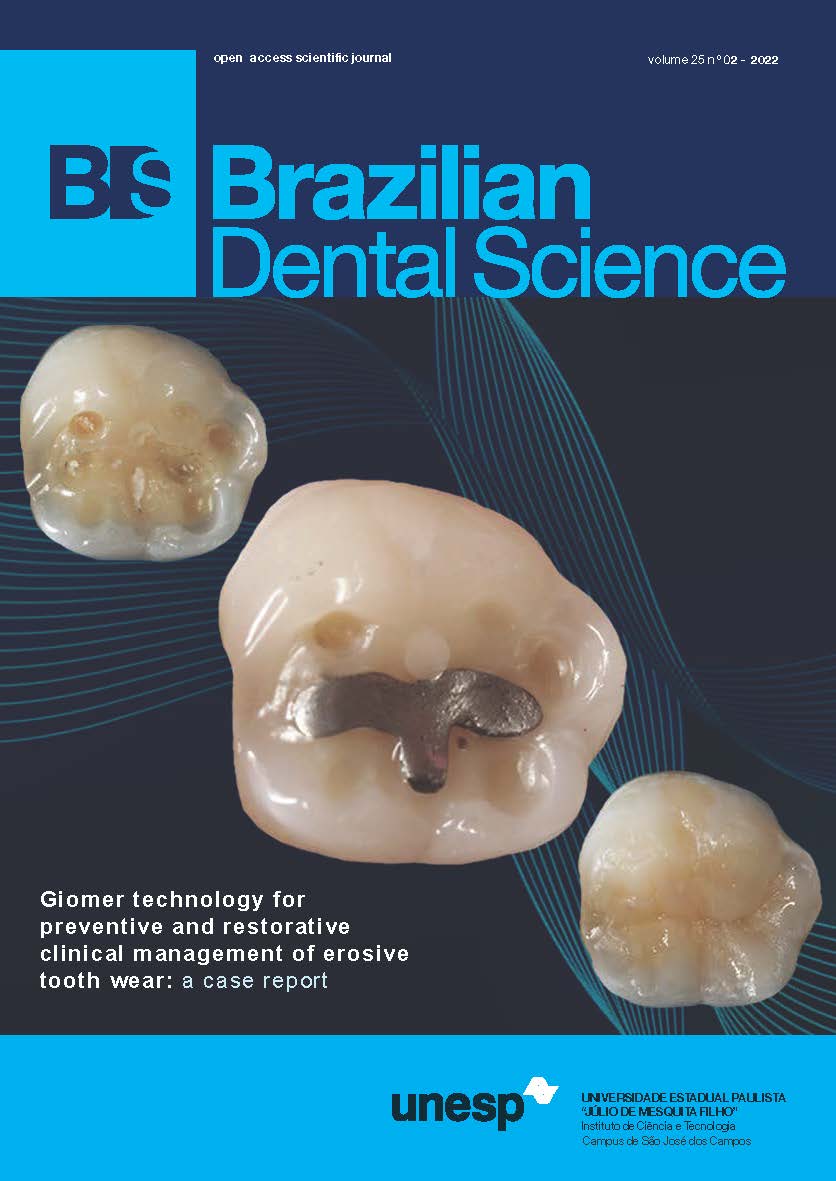Sodium trimetaphosphate combined to calcium as a strategy to improve dentin-bonding interface
DOI:
https://doi.org/10.4322/bds.2022.e3053Abstract
Objective: The aim of this study was to evaluate the effect of STMP as biomimetic analog of dentin matrix on
the dentin bond strength submitted to artificial cariogenic challenge over time. Material and Methods: The total
number of teeth used in the experiment was 60 teeth, which were divided into 6 groups (n = 10). Of these total
amount, 10 teeth were not submitted to the artificial cariogenic challenge (ACC), serving as control group (Sound
Dentin - SD) while the other 50 were submitted to an ACC (7d/37ºC), being treated with treatment solutions
according to each group: SD- deionized water/sound dentin, CD- deionized water/ artificial caries dentin, GIIISTMP,
GIV- STMP + Ca(OH)2, GV- STMP + NaF, and GVI- NaF. After treatments (24h), the specimens were
restored (Adper Single Bond Universal + Filtek Z250), to obtain resin–dentin sticks with a cross sectional area of
0.8mm2, approximately. Two-third of these sticks were stored in artificial saliva (37°C) for analyzes after 6 and
12 months. The 1/3 remains were subjected to mTBS test (baseline). Data were analyzed by two-way ANOVA
and Tukey tests (p<0.05). Results: In general, the highest mTBS values were obtained in sound condition
(SD), while the artificial caries condition (CD) determined minimum values. Groups treated with NaF (with or
without STMP- GV and GVI) were not able to improve adhesion over time. Only the use of STMP + Ca(OH)2
(GIV) improved the mTBS compared to the others caries-challenged dentin after 1 year. The adhesive failure
pattern was predominant in all time. Conclusion: The use of the STMP associated with Ca(OH)2 seems to be a
viable therapeutic strategy conciliating the biomimetizing capacity to the adhesive process satisfactorily even its
performance is not superior to initial condition.
KEYWORDS
Dentin; Dental adhesive; Protease inhibitors.
Downloads
Downloads
Published
How to Cite
Issue
Section
License
Brazilian Dental Science uses the Creative Commons (CC-BY 4.0) license, thus preserving the integrity of articles in an open access environment. The journal allows the author to retain publishing rights without restrictions.
=================




























